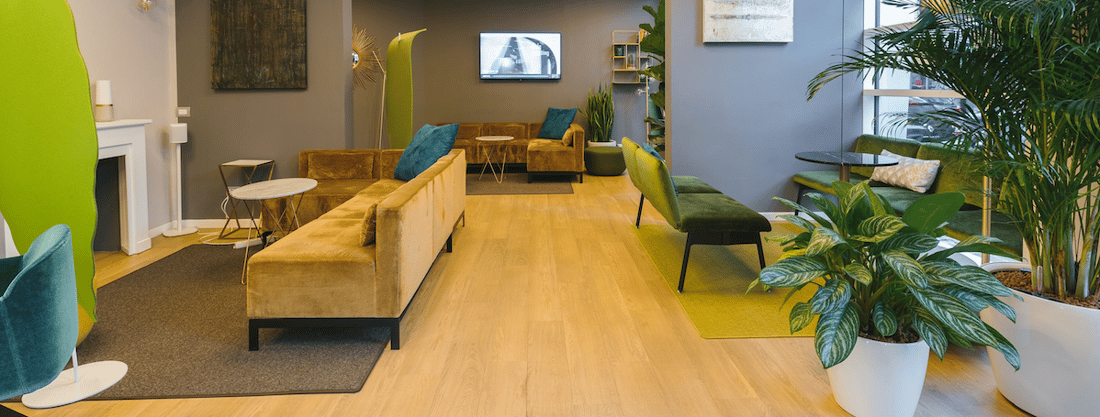What is agile working? 6 tips for a hybrid environment

What is agile working, anyway?
If when you hear those words you imagine holding a Taraksvasana pose while checking your email, you’re not alone; if you’re thinking about software technology and a “scrum,” you’re also not far off.
What is the agile way of working?
Agile working, or agile methodology, contains elements of both of these ideas - it involves a culture of flexibility in the workplace, and a collaborative, iterative approach to setting goals and creating projects.
In an agile working environment, employees are given considerable autonomy in deciding on the “where, when, and how” of their work, with the prevailing belief that “work is an activity, not a place.”
This relinquishing of administrative control leaves employees free to innovate, feeling empowered, and able to work in whatever way they personally deem productive, so long as the objectives are met.
"Intelligence is the ability to adapt to change." -
Stephen Hawking
What are the benefits of agile working?
Experts say that some of the benefits of agile working include greater employee engagement and productivity, better work-life balance, and the ability to attract and retain top talent - all of which can lead to profitability for companies and more satisfied customers.
"I would do everything I possibly could to put more credits back in that personal resiliency bank account that they have, and I would look hard at my organization and say, 'What are we doing that just makes it hard for our employees to get stuff done?'" - Brian Kropp, Group Vice President and Chief of HR Research at Gartner
Agile working tips: Best practices
Complementing top 2021 workplace trends, here are some of the best practices to help institute an agile work environment.
1. Allowing employees to work from anywhere.
There’s an old country song by Porter Wagoner and Dolly Parton, entitled “Anyplace You Want to Go” - and that idea is readily applicable to an agile workplace.
Rather than coming into their brick and mortar office from 9-5 every single day, employees can alternately work from home, or a coffee shop, or a hammock in Fiji.
Hybrid working arrangements are a prominent feature of an agile work environment. So are alternate hours: Night owls can work late at night; busy parents can plan their work hours around their children’s schedules; employees heading back to school for professional degrees can work around their classes and coursework.
Moreover, employees are given a clear task, with instructions to work within its boundaries - but are not told specifically how to achieve it, leaving most decisions up to them.
2. Implementing integrated, streamlined technologies.
To facilitate the agile workspace, adaptive technologies (in particular integrated solutions) are key.
Particularly during the global health crisis, employees and clients must be able to efficiently and safely enter their workplace as needed, even at odd hours.
Employee check-in tools can provide that needed flexibility and utility, offering a menu of digital features such as:
- advanced check-in for meetings or other office attendance (and a touchless check-in for unexpected visitors)
- health screening questionnaires (complete with a temperature scanner),
- touchless access to turnstyles, doors, and elevators,
- integrated access control systems that allow for personalized QR codes,
- integration with security systems, and,
- robust data privacy
This last bit is particularly important: Due to potential need for contact tracing, integration with a visitor management system (VMS) that securely stores contact information on entrants to the building - only for as long as necessary, in compliance with data privacy regulations - is crucial.
3. Setting up flexible office arrangements.
Flexible office arrangements, including shareable flex space, are a staple of the agile work environment.
With employees working from alternate locations some of the time, different configurations of office space (a departure from personalized cubicles) are becoming the norm.
"Companies will realize they don’t need all of this fixed space. They can get employees to work from home part of the time, and work from flex spaces part of the time. I think the biggest thing we’ve been seeing for a while now is this movement towards flexibility and how stakeholders like landlords will accommodate for that." - Tashi Dorjee, Head of Flex Space, Australia & New Zealand at JLL
Employees may use apps to book everything from meeting rooms to individual desk space in advance of their arrival, in order to ensure that the area they need (with whatever necessary video conferencing technology or climate control) is reserved and ready for their arrival.
On a larger scale, space management software allows companies to monitor their own offices to optimize space utilization, comfort, and energy efficiency, and to facilitate safe social distancing.
4. Using tools for digital communication - beyond Zoom.
With employees working from both in and out of the office, potentially across different regions and time zones, robust tools for digital communication are essential.
Of course, the use of Zoom, Google Hangouts, Skype, and FaceTime have skyrocketed during the global health crisis, and that level of utilization looks likely to continue given the shift towards agile working.
But beyond these common video conferencing tools, employees can maintain a similar level of on-going communication as when working in adjacent cubicles or chatting at the water cooler through Slack, Zoho, Discord, Chanty, Microsoft Teams, and other business communication platforms.
With designated “chats” or “channels” for different collaborative groups, projects, and teams within the same company, employees can maintain the unified communication needed for an agile work environment.
5. Providing flexible contracts and agreements.
In order to minimize budgetary and resources constraints, it may be necessary for companies seeking an agile work environment to obtain flexible contracts: real estate leases, service supply contracts, maintenance contracts, and other types of agreements for goods, services, and space.
Companies may need to anticipate dynamic needs for everything from office space, to energy usage, to supplies such as desktop computers, pens, and staplers.
To that end, traditional leasing may be on its way out in favor of more adaptable platforms that allow professionals at all levels to access serviced offices, private buildings, and co-working spaces for flexible amounts of time, without a lot of headaches.
6. Building and maintaining the right workplace culture.
Above all, maintaining an agile work environment is an adjustment in work culture. Administrators and supervisors need to be able to place a certain amount of trust in employees, granting them the independence and autonomy to work at their own pace, and in their own preferred fashion, without constant monitoring.
To that end, employees need to demonstrate accountability - ability to deliver a quality product consistently by deadline, and availability for regular communication by phone, communication app, video conferencing, or whatever tool is required.
"Transformations, including Agile ones, touch [people's] ways of working, comfort zones, frustrations, ideas. And [to deal] with [leading people and organizations] towards a transformation, you need to be humble, respectful, and know how to put on the table good arguments, not start conflicts." - Raul Barth, Agile Coach at Amadeus
Adopting the agile way of working
Agile working can have pitfalls; lack of accountability on the part of employees, resistance to change on the part of management, or discomfort with using digital tools consistently can all cause a lot of frustration and complicate adoption.
However, with the right steps towards a smooth transition to flexible working practices, along with robust integrated systems to support project needs, companies can reap the benefits of agile working - and pass those benefits along to their clients as well.
Learn more about how a Proxyclick helps facilitate safe returns to offices, flex spaces, facilities, and other work spaces in this changing world of work. Book a demo with one of our experts below.



